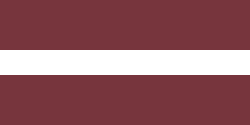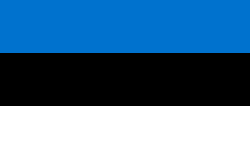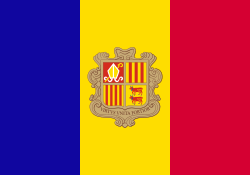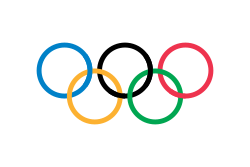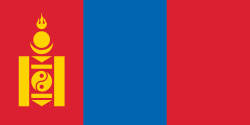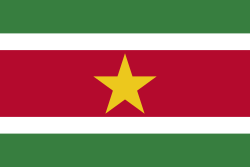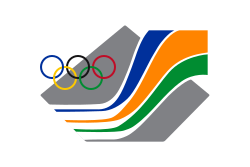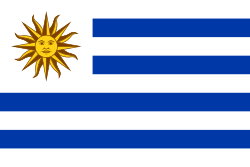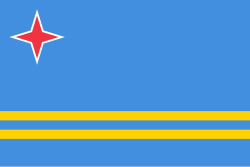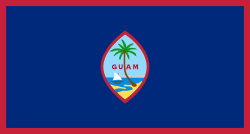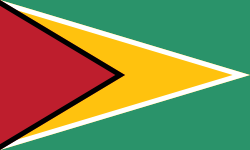Herrarnas linjelopp i landsvägscykling vid olympiska sommarspelen 1992
| Herrarnas linjelopp vid de XXV:e olympiska sommarspelen | ||||
| Anläggning | Sant Sadurni d'Anoia | |||
|---|---|---|---|---|
| Datum | 2 augusti | |||
| Deltagare | 154 från 61 nationer | |||
| Vinnartid | 4:35:21 | |||
| Medaljörer | ||||
| ||||
| ||||
| ||||
| ← 1988 1996 → | ||||
| Cykling vid olympiska sommarspelen 1992 | ||||
|---|---|---|---|---|
| Landsvägscykling | ||||
| Linjelopp | Herrar | Damer | ||
| Tempolopp lag | Herrar | |||
| Bancykling | ||||
| Individuell förföljelse | Herrar | Damer | ||
| Lagförföljelse | Herrar | |||
| Sprint | Herrar | Damer | ||
| Tempolopp | Herrar | |||
| Poänglopp | Herrar | |||
Herrarnas linjelopp i landsvägscykling vid olympiska sommarspelen 1992 ägde rum den 2 augusti 1992 i Sant Sadurní d'Anoia.
Medaljörer
| Event | Guld | Silver | Brons |
| Herrarnas linjelopp | Italien | Nederländerna | Lettland |
Resultat
Slutliga tider
| Placering | Cyklist | Tid |
|---|---|---|
| 4:35:21 | ||
| 4:35:22 | ||
| 4:35:24 | ||
| 4. | 4:35:56 | |
| 5. | — | |
| 6. | — | |
| 7. | — | |
| 8. | — | |
| 9. | — | |
| 10. | — | |
| 11. | — | |
| 12. | — | |
| 13. | — | |
| 14. | — | |
| 15. | — | |
| 16. | — | |
| 17. | — | |
| 18. | — | |
| 19. | — | |
| 20. | — | |
| 21. | — | |
| 22. | — | |
| 23. | — | |
| 24. | — | |
| 25. | — | |
| 26. | — | |
| 27. | — | |
| 28. | — | |
| 29. | — | |
| 30. | — | |
| 31. | — | |
| 32. | — | |
| 33. | — | |
| 34. | — | |
| 35. | — | |
| 36. | — | |
| 37. | — | |
| 38. | — | |
| 39. | — | |
| 40. | — | |
| 41. | — | |
| 42. | — | |
| 43. | — | |
| 44. | — | |
| 45. | — | |
| 46. | — | |
| 47. | — | |
| 48. | — | |
| 49. | — | |
| 50. | — | |
| 51. | — | |
| 52. | — | |
| 53. | — | |
| 54. | — | |
| 55. | — | |
| 56. | — | |
| 57. | — | |
| 58. | — | |
| 59. | — | |
| 60. | — | |
| 61. | — | |
| 62. | — | |
| 63. | — | |
| 64. | — | |
| 65. | — | |
| 66. | — | |
| 67. | — | |
| 68. | — | |
| 69. | — | |
| 70. | — | |
| 71. | — | |
| 72. | 4:36:33 | |
| 73. | 4:36:41 | |
| 74. | 4:36:52 | |
| 75. | 4:42:31 | |
| 76. | 4:44:05 | |
| 77. | 4:44:32 | |
| 78. | 4:45:14 | |
| 79. | — | |
| 80. | 4:52:07 | |
| 81. | 4:58:25 | |
| 82. | — | |
| 83. | 5:02:11 | |
| 84. | — |
Avbröt
|
|
|
Referenser
Externa länkar
| ||||||||
Media som används på denna webbplats
An icon that represents a gold medal
An icon that represents a silver medal
An icon that represents a bronze medal
Pictograms of Olympic sports - Cycling (road). This is unofficial sample picture. Images of official Olympic pictograms for 1948 Summer Olympics and all Summer Olympics since 1964 can be found in corresponding Official Reports.
Pictograms of Olympic sports - Cycling (track). This is unofficial sample picture. Images of official Olympic pictograms for 1948 Summer Olympics and all Summer Olympics since 1964 can be found in corresponding Official Reports.
Pictograms of Olympic sports - Cycling (road). This is unofficial sample picture. Images of official Olympic pictograms for 1948 Summer Olympics and all Summer Olympics since 1964 can be found in corresponding Official Reports.
Olympic Rings without "rims" (gaps between the rings), As used, eg. in the logos of the 2008 and 2016 Olympics. The colour scheme applied here was specified in 2023 guidelines.
Olympic Rings without "rims" (gaps between the rings), As used, eg. in the logos of the 2008 and 2016 Olympics. The colour scheme applied here was specified in 2023 guidelines.
Variant version of a flag of Japan, used between January 27, 1870 and August 13, 1999 (aspect ratio 7:10).
Kanadas flagga, införd 1965; denna version med Pantone‐nyanser. Nuvarande utformning ersatte den tidigare kanadensiska Red Ensign.
Olympic Movement flag
Proportions 2:3, created 1913, adopted 1914, first used 1920.
- Colors as per http://fairspielen.de/wp-content/uploads/2015/09/Annexe-3-Olympism_and_the_Olympic_Symbol_-_Principles_and_Usages_Guide-1.pdf
- blue: PMS 3005C
- yellow: PMS 137C
- black: PMS 426C
- green: PMS 355C
- red: PMS 192C
- Dimensions of the rings taken from http://fairspielen.de/wp-content/uploads/2015/09/Annexe-3-Olympism_and_the_Olympic_Symbol_-_Principles_and_Usages_Guide-1.pdf
The flag of Slovenia.
- "The construction sheet for the coat of arms and flag of the Republic of Slovenia
- is issued in the Official Gazette Uradni list Republike Slovenije #67, 27 October 1994
- as the addendum to the Law on the coat of arms and flag."
The civil ensign and flag of Belgium. It is identical to Image:Flag of Belgium.svg except that it has a 2:3 ratio, instead of 13:15.
Det är enkelt att lägga till en ram runt den här bilden
Flag of Iran. The tricolor flag was introduced in 1906, but after the Islamic Revolution of 1979 the Arabic words 'Allahu akbar' ('God is great'), written in the Kufic script of the Qur'an and repeated 22 times, were added to the red and green strips where they border the white central strip and in the middle is the emblem of Iran (which is a stylized Persian alphabet of the Arabic word Allah ("God")).
The official ISIRI standard (translation at FotW) gives two slightly different methods of construction for the flag: a compass-and-straightedge construction used for File:Flag of Iran (official).svg, and a "simplified" construction sheet with rational numbers used for this file.
Flag of Jamaica. “The sunshine, the land is green, and the people are strong and bold” is the symbolism of the colours of the flag. GOLD represents the natural wealth and beauty of sunlight; GREEN represents hope and agricultural resources; BLACK represents the strength and creativity of the people. The original symbolism, however, was "Hardships there are, but the land is green, and the sun shineth", where BLACK represented the hardships being faced.
Flag of the Philippines in the previous official shade of Cable No. 70077 or National Flag Blue. In use for 60 years, 8 months and 18 days from March 25, 1936, to February 25, 1985 and from February 25, 1986, to February 12, 1998.
Construction sheet approved by the Philippine Heraldry Committee on January 24, 1955.
The exact colors adopted by the Philippine Heraldry Committee in 1955 was as follows:
The red color bearing Cable No. 70180; the blue color, Cable No. 70077; the yellow color, Cable No. 70068; and the white color, Cable No. 70001.(c) Zscout370 på engelska Wikipedia, CC BY-SA 3.0
Replacement for en:Image:South African Olympic Flag.png.
Författare/Upphovsman: Den här W3C-overifiera vektorbilden skapades med Inkscape ., Licens: CC BY-SA 3.0
Flag of Ethiopia, used from 1987 to 1991
Made by author of Xramp, first uploaded by Denelson83 as Flag of Ecuador.svg, modifications by Husunqu.
Belize Flag before August 28, 2019 Standardzations SVG from 3 September 2019 revision by FDRMRZUSA
The flag of Aruba
This is the flag of Bahrain used from 5 October 1950 until 14 February 2002. The base image is from the 2002 CIA World Factbook (mirrored at UMSL). I have removed the border and recolored the red section according to Image:Flag of Bahrain.svg.
The former flag of Rwanda (1962-2001). Commonly refered to as the "R" flag.
Variant version of a flag of Japan, used between January 27, 1870 and August 13, 1999 (aspect ratio 7:10).
The flag of San Marino, before the 2011 standardization
The former flag of Rwanda (1961–2001). Commonly refered to as the "R" flag.
The flag of Guam, courtesy an e-mail from the author of xrmap. Modifications by Denelson83.
This is the flag of the Cayman Islands, prior to 1999 (It seems this version is still in use). The base pattern is from HK Blue Ensign and the arms are from the blue ensign. The FOTW was used for the position of the arms.
The three stars mean Grand Cayman(76miles), Cayman Brac(14miles), and Little Cayman(10miles).Författare/Upphovsman: Thomasbellooficial, Licens: CC BY-SA 4.0
Flag of the Republic of Venezuela 1954-2006.
Chinese Taipei Olympic Flag. According to the official website of Chinese Taipei Olympic Committee, Blue Sky(circle) & White Sun(triangles) above the Olympic rings is neither the National Emblem of the Republic of China, nor the Party Emblem of Kuomintang (KMT), but a design in between, where the triangles do not extend to the edge of the blue circle, as registered at International Olympic Committee in 1981 and digitally rendered in 2013. Besides, the blue outline of the five-petaled plum blossom is broader than the red one. Moreover, the CMYK code of the blue one and the Blue Sky & White Sun is "C100-M100-Y0-K0", and different from the Olympic rings (C100-M25-Y0-K0). Note that it's the only version recognized by IOC.
The flag of San Marino, before the 2011 standardization



